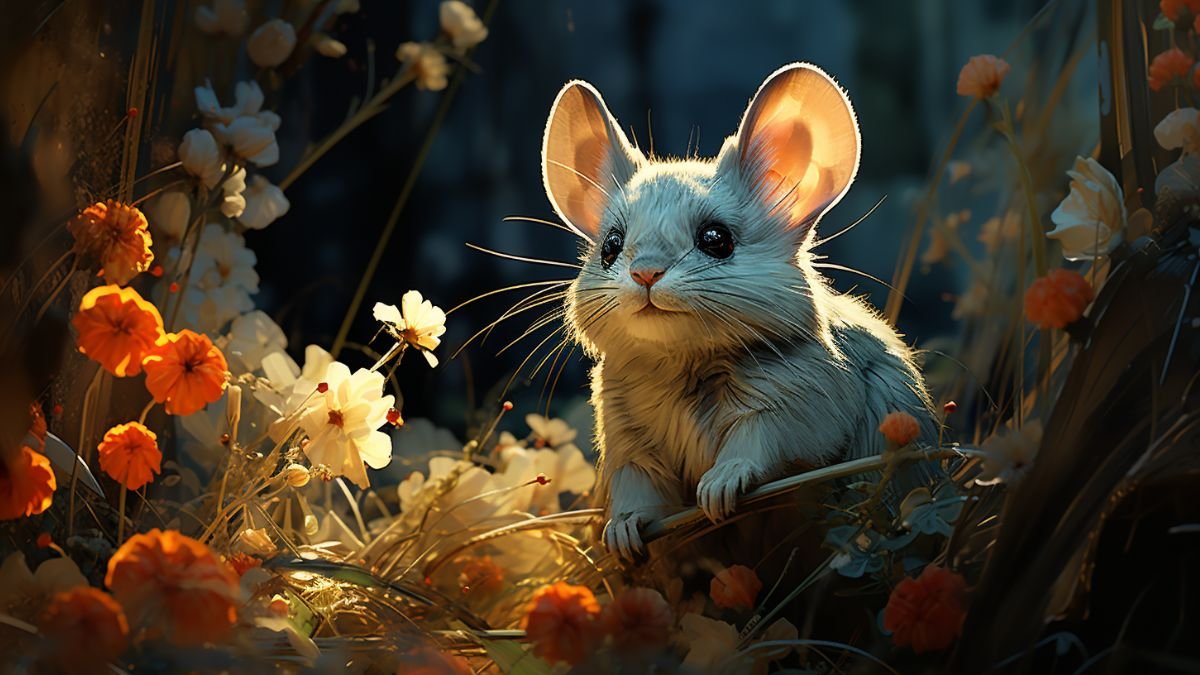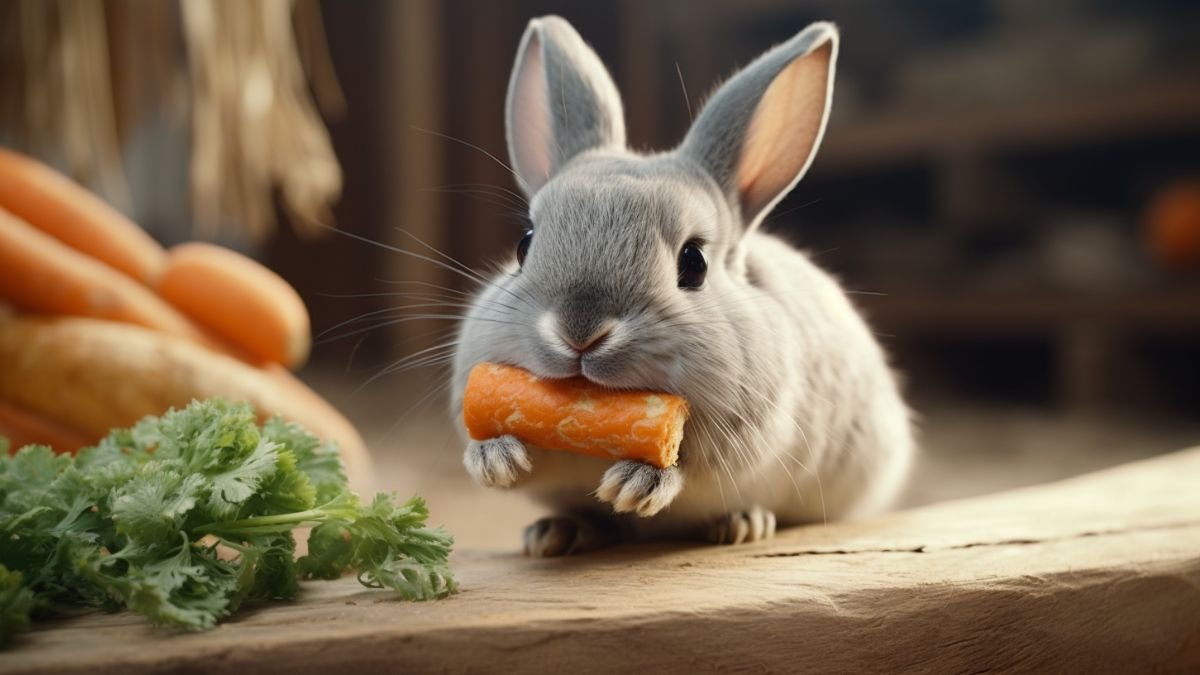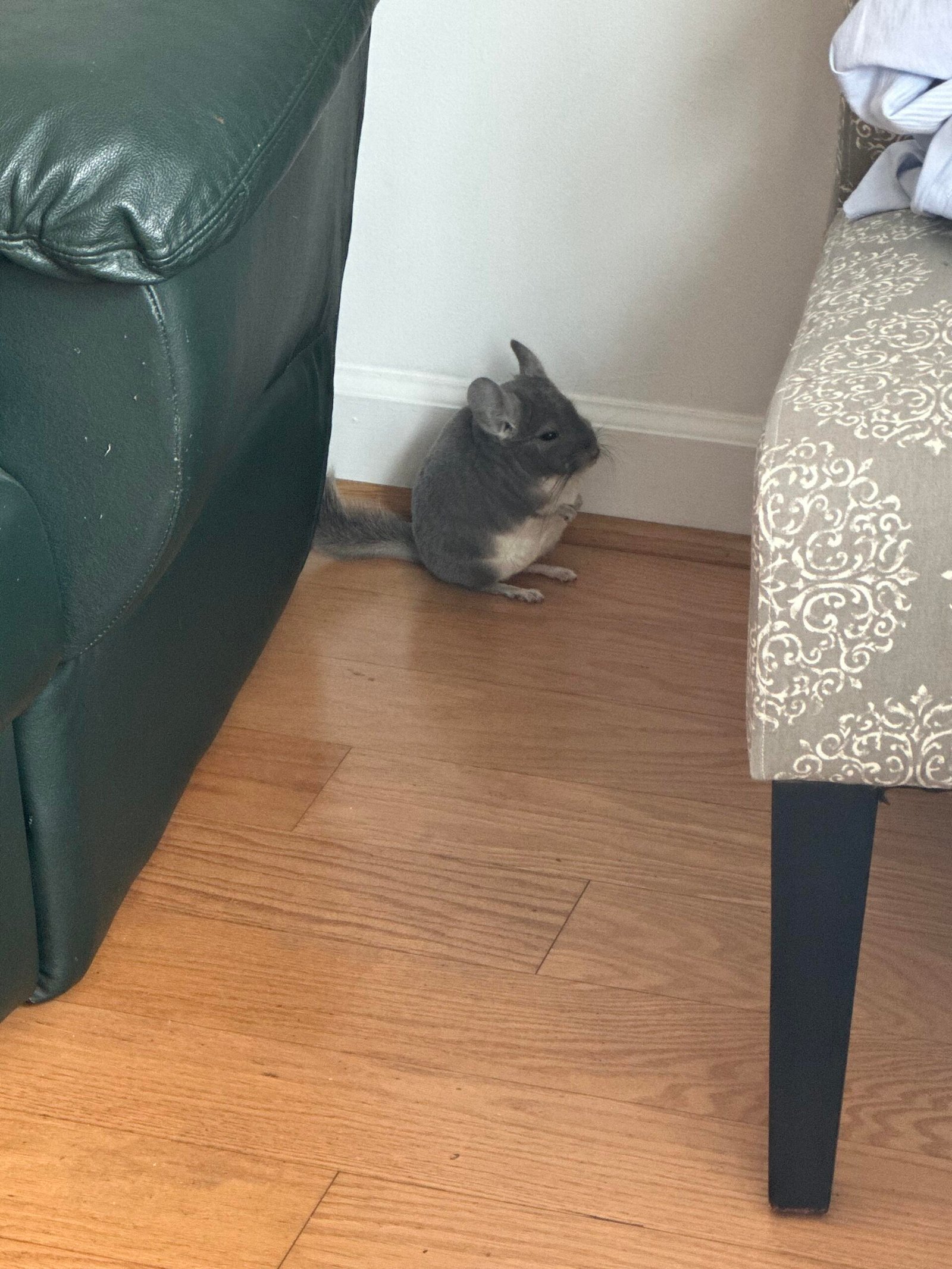
Imagine your chinchilla suddenly falling ill or getting hurt. Would you know what to do?
Having a ready emergency kit can make all the difference in keeping your furry friend safe and calm. In this guide, you’ll discover exactly what essentials you need to create a reliable chinchilla emergency kit. By preparing now, you’ll feel confident and ready to act fast when your chinchilla needs you the most.
Keep reading to learn how to protect your pet and give them the best care possible.

Choosing The Right Container
Choosing the right container for your chinchilla emergency kit is very important. The container keeps all supplies safe and organized. It should be easy to carry and protect items from damage. The right container makes it simple to find what you need fast. This helps during a stressful situation.
Durability And Protection
Pick a container made from strong material. Plastic or metal boxes work well. They protect supplies from water, dirt, and breaking. The container should have a secure lid to keep everything inside. This stops spills and loss of items.
Size And Portability
Choose a container that fits all your supplies without being too big. It should be light and easy to carry. A handle or shoulder strap helps move the kit quickly. Keep the size compact for easy storage at home or in a car.
Organization Features
Select a container with compartments or small boxes inside. This keeps items separated and easy to find. Clear containers help you see what is inside without opening it. Labels on compartments make it faster to grab the right item.
Easy To Clean
The container should be simple to clean and dry. Plastic containers are best for this. A clean container helps keep supplies fresh and ready to use. Avoid containers that absorb moisture or dirt easily.

Basic First Aid Supplies
Basic first aid supplies are essential for a chinchilla emergency kit. These items help you act fast during injuries or health problems. Keeping these supplies ready can protect your pet from serious harm.
Choose supplies that are safe and gentle for chinchillas. Avoid anything harsh or toxic. Prepare to treat minor cuts, scrapes, and other common issues.
Clean Gauze Pads And Cotton Balls
Use clean gauze pads to cover wounds. They stop bleeding and keep dirt out. Cotton balls help clean small cuts or apply medicine. Always keep them sterile and fresh.
Antiseptic Solution Safe For Pets
Antiseptic cleans wounds and prevents infection. Choose a product made for small animals. Avoid harsh chemicals. Apply gently to avoid hurting your chinchilla.
Small Scissors And Tweezers
Small scissors cut tape or fur around wounds. Tweezers remove tiny debris like splinters. Both tools must be clean to avoid infection.
Adhesive Medical Tape
Use adhesive tape to hold gauze in place. Pick tape that sticks well but is gentle on fur. Change the tape regularly to keep wounds clean.
Styptic Powder Or Pencil
Styptic powder stops bleeding fast. Useful for small cuts or nail trims. Only use a tiny amount. Keep it out of your chinchilla’s reach.
Disposable Gloves
Wear disposable gloves to keep wounds clean. Gloves protect both you and your pet. Change gloves between treatments to avoid germs.
Safe Bedding And Comfort Items
Safe bedding and comfort items keep chinchillas calm during emergencies. They create a soft, secure space that reduces stress. Choosing the right bedding ensures your chinchilla stays dry and cozy. Comfort items remind your pet of home and provide familiarity.
Choosing Dust-free Bedding
Dust can harm chinchillas’ sensitive lungs. Use dust-free materials like paper-based or fleece bedding. Avoid wood shavings that create dust and odors. Keep bedding clean and dry to prevent infections.
Soft Blankets And Hiding Spots
Soft blankets add warmth and comfort. Use natural fibers that do not irritate skin. Add small hiding places like tunnels or huts. Chinchillas feel safe when they can hide easily.
Familiar Smells For Comfort
Include items with your chinchilla’s scent. A small cloth or toy from their cage works well. Familiar smells reduce anxiety in new or stressful spaces. Change these items regularly to keep them fresh.
Emergency Food And Water
Preparing emergency food and water for your chinchilla is vital. These small pets need special care during any unexpected event. Safe food and clean water keep them healthy and calm.
Store enough food and water for at least three days. Use containers that seal tightly to keep food fresh and water clean. Regularly check supplies and replace old items.
Choosing The Right Emergency Food
Pick high-quality chinchilla pellets as the main food source. Avoid treats and sugary snacks in the emergency kit. Include plain hay like timothy hay for fiber and digestion. Store food in small amounts to prevent spoilage.
Providing Safe Emergency Water
Use fresh, clean water stored in a spill-proof container. Change the water every day to avoid bacteria growth. Keep extra water bottles sealed and ready to use. Avoid tap water if unsure about its safety.
Packaging And Storage Tips
Use airtight containers or heavy-duty bags to store food. Label each container with the packing date. Store the kit in a cool, dry place away from sunlight. Check the kit monthly to ensure freshness and safety.
Medications And Supplements
Medications and supplements are vital parts of a chinchilla emergency kit. They help support your pet’s health during sudden illness or stress. Having the right items ready saves time and can prevent serious problems.
Keep only safe, vet-approved medications. Never give human medicine to chinchillas without advice. Supplements can boost their immune system and ease recovery from injury or sickness.
Basic Medications To Include
Stock a few essential medicines that your vet recommends. These may include pain relievers made for small animals, digestive aids, and anti-diarrheal treatments. Store them in labeled containers with clear instructions.
Common Supplements For Chinchillas
Calcium and vitamin D supplements help maintain strong bones. Probiotics support gut health and improve digestion. Keep these supplements fresh and within their expiration dates.
Proper Storage And Safety
Store all medications and supplements in a cool, dry place. Use airtight containers to prevent contamination. Keep them out of reach of children and pets to avoid accidental ingestion.
Tools For Handling And Transport
Having the right tools for handling and transport is vital for a chinchilla emergency kit. These tools keep your pet safe and calm during stressful moments. Proper handling reduces the risk of injury for both you and the chinchilla. Transport tools help you move your chinchilla quickly and securely.
Secure Carrier
A secure carrier is essential for moving your chinchilla. Choose one with good ventilation and a solid door. It should be the right size—not too big or small. A snug fit prevents the chinchilla from sliding inside. Look for carriers with soft padding to keep your pet comfortable.
Soft Towels Or Blankets
Soft towels or blankets help in gentle handling. Wrap your chinchilla carefully to keep it calm and still. This reduces stress and stops sudden movements. Towels also protect you from scratches during handling. Keep a few clean towels ready in your emergency kit.
Gloves For Protection
Gloves protect your hands and your chinchilla. Use soft, flexible gloves to avoid hurting your pet. Gloves help if your chinchilla feels scared or tries to bite. Choose gloves that allow you to hold your chinchilla firmly but gently. Store them in your emergency kit for quick access.
Cleaning And Sanitation Items
Cleaning and sanitation items are vital in a chinchilla emergency kit. They help keep your pet safe and healthy. A clean environment prevents infections and other health problems. These items allow quick and effective cleanup after accidents or illness.
Keeping your chinchilla’s space clean ensures comfort and reduces stress. You can handle emergencies smoothly with the right tools on hand. Focus on items that are safe and easy to use around chinchillas.
Disinfectant Wipes
Disinfectant wipes help clean surfaces fast. Choose wipes that are non-toxic and safe for pets. Use them on cages, water bottles, and feeding areas. They kill germs without harming your chinchilla.
Paper Towels
Paper towels are essential for quick messes. They absorb liquids and dry surfaces quickly. Keep a roll handy for spills and accidents. They are disposable, which helps prevent spreading germs.
Pet-safe Cleaning Spray
Use a pet-safe cleaning spray for deep cleaning. Avoid harsh chemicals that can harm your chinchilla. Spray on cage bars, shelves, and toys. Wipe with a clean cloth to remove dirt and bacteria.
Gloves
Wear gloves during cleaning to protect yourself and your pet. They stop the spread of germs and dirt. Use disposable gloves for easy cleanup. Change gloves between tasks to keep things sanitary.

Emergency Contact Information
Keep a list of emergency contacts near your chinchilla’s kit. Include your vet’s phone number and a nearby animal hospital. Quick access to these contacts can save valuable time during an emergency.
Importance Of Emergency Contact Information
Emergency contact information is crucial for your chinchilla’s safety. It helps you get quick help during an emergency. Keep this information clear and easy to find. You might need it fast in a stressful situation.
Include contacts for veterinarians, poison control, and animal hospitals. Make sure the contacts are available 24/7. Your chinchilla’s health depends on fast and correct action.
What To Include In Emergency Contact Information
Start with your primary vet’s name, phone number, and address. Add an emergency vet clinic nearby in case your regular vet is closed. Include a poison control hotline number for animals.
Also, list a trusted friend or family member who can help. They can care for your chinchilla if you are not available. Keep all contacts updated and accurate.
How To Organize And Store Contact Information
Write the contacts on a card or paper. Place it in your chinchilla’s emergency kit. You can also save it on your phone for quick access.
Use clear, large print for easy reading. Keep multiple copies in different places. This ensures you always have the information when needed.
Regular Kit Maintenance
Keep your chinchilla emergency kit in good shape by checking supplies often. Replace expired items and restock used materials to stay prepared. Regular care ensures quick help during any emergency.
Check Expiration Dates
Always check the expiration dates on medicines and supplies. Throw away anything that is expired. Replace it with new items. This keeps your kit ready for any emergency.
Restock Used Items
After an emergency, replace any items you used. This includes bandages, gloves, and medications. Keep your kit complete and prepared at all times.
Keep Supplies Clean And Dry
Store your kit in a dry place. Make sure all items stay clean and dry. Moisture can damage bandages and medicines. Use sealed containers or plastic bags to protect supplies.
Update Contact Information
Check that all emergency phone numbers are current. Include your vet’s contact and a nearby animal hospital. Change any outdated numbers to avoid delays in emergencies.
Review Kit Contents Regularly
Look through your kit every few months. Confirm you have all necessary items for your chinchilla’s needs. Adjust the kit as your pet grows or health changes.
Frequently Asked Questions
What Are The Essential Items For A Chinchilla Emergency Kit?
Include water, hay, dust bath, soft towels, a small first aid kit, and a carrier.
How Often Should I Check And Update The Emergency Kit?
Check your kit every 3 to 6 months to replace expired or used items.
Why Is A Dust Bath Important In A Chinchilla Emergency Kit?
Chinchillas need dust baths to keep their fur clean and healthy, especially in emergencies.
Can I Use Human First Aid Supplies For My Chinchilla?
Some supplies like gauze and tweezers work, but use pet-safe medications only.
How Do I Keep My Chinchilla Calm During An Emergency?
Speak softly, handle gently, and keep the environment quiet and dark.
What Type Of Carrier Is Best For Emergency Chinchilla Transport?
A small, well-ventilated, secure carrier that prevents escape and reduces stress.
Should I Include Food In The Chinchilla Emergency Kit?
Yes, pack fresh hay and a small amount of chinchilla pellets for emergencies.
How Do I Prepare My Home For Chinchilla Emergencies?
Plan safe spaces, gather emergency contacts, and store the kit in an easy spot.
Conclusion
Creating a chinchilla emergency kit helps you stay ready for any situation. Keep essential items like food, water, and a first aid kit handy. Check your kit regularly to replace expired supplies. Knowing how to use each item can save your pet’s life.
Preparedness gives you peace of mind and protects your chinchilla’s health. Start building your kit today. It’s a small effort with big benefits. Your chinchilla will thank you with a happy, safe life.







